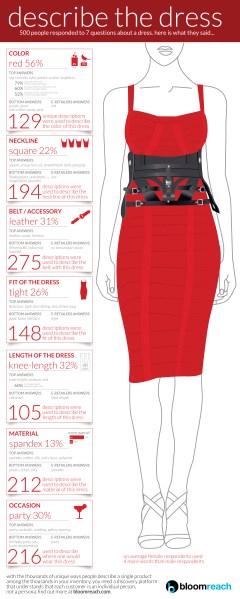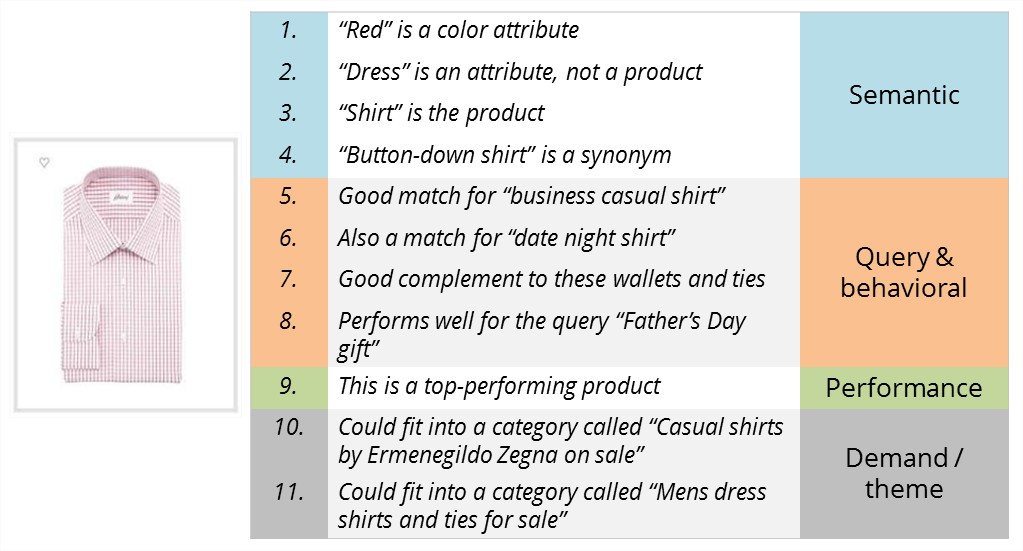So you want to enable personal one-to-one communication with your clients, but you don’t want to be creepy about it.
Marketers have been trying to achieve this for the past decade, mostly via heavily automated marketing tech to achieve a one-to-one “feel” for each customer while not incurring the tax of heavy, manual processes. But frequently, they’ve been forced to make assumptions based on insufficient data, which can confuse or anger customers.
Big data marketing platform BloomReach thinks it’s finally cracked the problem, and on a giant scale.
Today the company is launching its Personalized Discovery Platform, which could well be a game-changer in this area of marketing technology. I took a look at the system and talked with the team at BloomReach to find out how it works and why it might just be the answer every marketer has been looking for.
In short, BloomReach allows a marketing team to make content and products more discoverable with a suite of connected applications that personalize organic search, site search, digital marketing and merchandising, regardless of the device the consumer is using to access that content.
The result of gaining this data? Marketers can now ensure that their web properties and marketing output deliver more than the usual “people also bought this” functionality. BloomReach say its technology allows a company’s website and communications to act more like they’ve been designed “just for you,” adapting to each user without requiring a login.
The BloomReach story started in 2008, when Google scientist Ashutosh Garg and Silicon Valley entrepreneur Raj De Datta started working on a solution to this age-old digital marketing issue.
“BloomReach was founded on the idea that the Internet must be more relevant,” De Datta, co-founder and CEO, told me. “We envisioned an entirely ‘BloomReached’ web.”
 At the heart of the newly-released system is a natural-language processing engine that understands content and matches it with what consumers are seeking. For example, let’s say you visit a website that uses the technology and are searching for a red dress for a particular evening event. Maybe you search for “scarlet bodycon clubbing” or “ruby form-fitting knee-length cocktails” or a “raspberry square-neck party.” Because English is not a programming language and there are thousands of ways to characterize just about any product, the website you’re searching might not return any meaningful results.
At the heart of the newly-released system is a natural-language processing engine that understands content and matches it with what consumers are seeking. For example, let’s say you visit a website that uses the technology and are searching for a red dress for a particular evening event. Maybe you search for “scarlet bodycon clubbing” or “ruby form-fitting knee-length cocktails” or a “raspberry square-neck party.” Because English is not a programming language and there are thousands of ways to characterize just about any product, the website you’re searching might not return any meaningful results.
In fact, BloomReach says, many searches on clothing websites don’t include the word “dress” at all. There are simply thousands of ways to describe the product.
BloomReach’s engine, however, understands alternative phrasing better than traditional text search techniques. So a website using the engine would be able to match your search with a variety of red dresses.
In addition, BloomReach believes it has answered the personalization problem and is able to treat each visitor as an individual rather than basing customizations on wide persona groups. The company says it really understands the context of every search.
The new Personalized Discovery Platform shares insights with all existing BloomReach applications. These include tools to identify demand for a merchant’s products across the web, analytics that determine performance and site behavior, personalization across websites, and mobile devices and tools to manage marketing content.
BloomReach’s platform also continually optimizes in real-time, improving and iterating with every user interaction. The technology doesn’t rely on wide consumer personas and demographic or historical data like many I’ve seen before: the Personalized Discovery Platform predicts the most relevant content for each consumer anonymously, even those who do not log-in.
First the platform understands the semantics around a product. What are the attributes, how is it described, what people say within reviews and more. Then, it looks at how people discovered that item; what they searched for, what landing pages it was a part of, and what people buy in addition to that product.
The platform then measures performance metrics such as revenue-per-visit, add-to-cart statistics, and clickthrough rates. It tries to answer the question of whether this is a product that can be successful for you or not. Finally, it understands the web-wide themes and how this product might be expressed elsewhere.
So why did the focus on personalizing with anonymous data?
VentureBeat’s VB Insight team is studying compensation for digital marketing execs.
Chime in here, and we’ll share the results.
“We actually believe that personal data such as broad demographic information often isn’t a good indicator of consumer intent at that moment — they may not be shopping for themselves,” De Datta said.
Importantly, all of this information and data that BloomReach uses is understood and collected before a visitor adds their own input and nuances to the process. Once a visitor enters the equation, BloomReach is understanding the details of their entrance to the site and how they got there, the path that user took through the site, what filters or choices they made when viewing the product and what theme the entire journey fits within. All without a login or demographic data.
What does that mean for the user when they switch devices, where details of their anonymous visit are no longer stored? Well, since BloomReach has created a complete profile around a user’s interactions with the site, they can algorithmically determine that the user, on another device, is likely to be the same person, and it can tie their entire, personalized experience together. It also means that users with similar profiles will have a more relevant experience from that site on their first visit.
How does this new Personalized Discovery Platform match up with that original company vision, I wondered. Has the team achieved its goal with this new platform?
“The platform is a step toward that goal, where every consumer can get the content that they are looking for at the right moment, regardless of device or channel from which they come,” De Datta said. “Five years after founding, we feel that we are in a good place, connecting the insights across our existing big data applications.”
Of course, there is always a counterpoint to total personalization. While marketers may see obvious benefits in personalizing websites, communications, ads, and content to fit each user, it is important that consumers don’t feel as though a company has breached their privacy.
I wondered how the Personalized Discovery Platform deals with this sensitive problem.
“Consumers want content that is highly relevant to them, but we feel that this should be done [in a way] that matches their intent,” De Datta said. “While we learn what consumers are doing throughout the web collectively — for instance how they describe products — personalization elements are specific to each online retailer.”
That’s an important point. If you’re looking at a website because you are interested in buying something they may provide, you’ll find it helpful, not invasive, to see content that’s personalized to be as relevant to you as possible.
What about the sheer scale of data collection involved in providing these personalizations based on so many product descriptors?
“If a retailer has 10 million products with 100 ways to describe each in English, then you have to put 300 million consumers in front of each item on maybe three different devices. So the biggest challenge was definitely designing and building a platform that can collect, handle, and organize the data to derive insights and perform actions that deliver personalized content to each consumer, all in real-time,” De Datta told me.
“Personalized discovery is ultimately a data problem because a retailer with thousands of products attempting to reach hundreds of millions of consumers – where every product can be described in hundreds of ways – cannot process data at that scale. That is the core problem that BloomReach is solving.”
All current BloomReach clients are getting the new engine as part of their existing implementations, and the company promises that the solution will be part of all future products too.
VentureBeat's mission is to be a digital town square for technical decision-makers to gain knowledge about transformative enterprise technology and transact. Learn More


